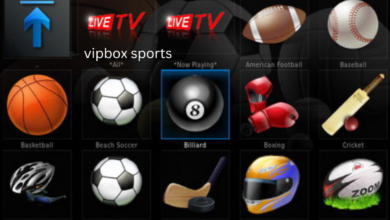Unlocking the Secrets of Harmonicode A Guide for Beginners

The rapid evolution of technology in recent years has transformed every industry, including the music world. One of the most intriguing and innovative advancements in this field is the emergence of “Harmonicode.” Combining the art of music with the precision of programming, Harmonicode represents an exciting new frontier where sound and code merge to create something unique. If you’re new to the concept, this guide is for you. We’re diving deep into the world of Harmonicode, its applications, and how you can start using it today.
What is Harmonicode?
At its core, Harmonicode is a term used to describe blending harmonic principles in music with the logic of computer code. Think of it as a bridge between sound’s natural world and programming’s digital universe. Using code to generate, manipulate, and experiment with harmonic structures, Harmonicode opens up endless possibilities for musicians, sound designers, and software developers alike.
It brings together two distinct areas: harmony in music and algorithmic programming. Harmony combines different musical notes played simultaneously to create a pleasing sound. In the context of Harmonicode, these musical structures are produced and manipulated using code, making it an intersection of creativity and computational processes.
The Origins of Harmonicode

While Harmonicode as a concept is relatively new, its origins are deeply rooted in algorithmic composition and generative music. The use of algorithms in music creation has been around for decades. Pioneers like Lejaren Hiller and Iannis Xenakis explored using computers to compose music. However, Harmonicode as a term and framework for combining music theory with programming gained traction with more accessible coding languages and tools like Max/MSP, Pure Data, and SuperCollider.
These platforms allow musicians and sound designers to write custom code that interacts directly with sound-generating software, enabling a highly flexible and dynamic approach to music creation. Harmonicode takes advantage of this flexibility by incorporating harmonic principles into the code, enabling users to explore sound innovatively.
How Harmonicode Works
To understand how Harmonicode works, it helps to first look at how music is typically created. Traditional music creation involves musicians using instruments to play notes, chords, and melodies, building up layers of sound to form a composition. The idea of Harmonicode is to automate and enhance this process by using code to generate musical elements like:
- Chords: A group of notes played together to form harmony.
- Scales: A set of notes ordered by pitch, forming the foundation of melodies.
- Intervals: The space between two notes.
- Rhythms: The pattern of beats or time in music.
Using coding languages like Python, JavaScript, or specific sound-focused programming languages, creators can programmatically generate and manipulate these elements in real-time. For instance, a developer might write a program that takes an input (such as a base note) and automatically generates a set of harmonies based on specific harmonic rules or scales. The possibilities are endless, allowing for complex and experimental compositions that would be difficult or time-consuming to create manually.
Practical Applications of Harmonicode
Harmonicode is not just a theoretical concept; it’s already being used in various practical ways across different fields. Below are some of the key areas where Harmonicode is making an impact:
Generative Music
One of the most exciting applications of Harmonicode is in generative music. This is a style of music where the composition is not pre-written but instead created algorithmically in real-time. Artists can write code that generates unique melodies, harmonies, and rhythms on the fly, ensuring that no two performances are ever the same. Generative music has found a place in modern art installations, interactive environments, and video game soundtracks.
Sound Design and Audio Processing
Sound designers use Harmonicode to create unique sounds for films, video games, or virtual environments. Using code to generate harmonic structures or manipulate sound waves in real time allows sound designers to explore new sonic possibilities. This type of code-based sound design can produce complex textures, evolving tones, and atmospheric sounds that would be difficult to achieve through traditional means.
Music Theory Education
Harmonicode can also be used as a teaching tool. Music students can gain a deeper understanding of theory by using code to visualize and interact with musical concepts like chord progressions, scales, and intervals. Instructors can create interactive lessons that help students learn about harmony, tonality, and musical structure in a more hands-on, engaging way.
Live Performance and Interactive Music Systems
Some musicians use Harmonicode in live performances, using code to alter the music in real-time. By integrating code with live instruments, performers can create evolving soundscapes, remixes, or improvisations during their sets. This interactive approach to music brings a fresh dynamic to live performances, offering new ways for artists to connect with their audience.
AI-Powered Music Composition
Artificial intelligence (AI) is making waves in many industries, and music is no exception. Harmonicode is being used to create AI-driven compositions that mimic human creativity. Using algorithms to study existing compositions, AI systems can generate original music that adheres to harmonic rules yet can create entirely new sounds and structures. AI-powered Harmonicode has the potential to assist both amateur and professional musicians in the creative process.
Getting Started with Harmonicode
Now that we’ve covered the basics of Harmonicode and its applications, let’s dive into how you can start. The good news is that learning Harmonicode doesn’t require a background in computer science or advanced music theory. If you’re comfortable with basic programming or have a passion for music, you can explore Harmonicode today.
Learn the Basics of Music Theory
If you’re not already familiar with music theory, it’s a good idea to start there. Understanding the fundamentals of scales, chords, and harmony will help you when you’re writing code to generate musical elements. There are plenty of online resources, tutorials, and courses available that can help you get a solid grasp of music theory.
Pick a Programming Language
Next, choose a programming language that you’re comfortable with. If you’re starting, Python is an excellent choice because it has a simple syntax and several libraries for sound manipulation. JavaScript is another great option, especially if you want to create interactive web-based music applications. For more advanced users, tools like SuperCollider or Max/MSP offer specialized environments for audio programming.
Explore Music Programming Libraries
Many libraries and frameworks are specifically designed to work with sound and music in code. Some popular ones include:
- PyDub (Python): A simple library for audio processing.
- Tone.js (JavaScript): A framework for creating interactive music in the browser.
- SuperCollider: A platform for real-time audio synthesis and algorithmic composition.
- Processing: A flexible software sketchbook and language for learning how to code within the visual arts context, which also supports audio generation.
Experiment and Create
The best way to learn Harmonicode is by diving right in. Start small by generating simple melodies or experimenting with basic harmonic structures. Once comfortable, you can create more complex projects like generative music pieces or interactive sound installations.
Join the Community
Finally, connect with other musicians and developers who are working with Harmonicode. Online communities like Reddit’s r/algorithmicmusic or forums dedicated to sound design and music programming can provide valuable support, ideas, and inspiration as you begin your journey.
Conclusion
Harmonicode is an exciting, innovative tool that merges the worlds of music and programming. Whether you’re a musician looking to experiment with new sounds or a developer interested in creating algorithmic compositions, Harmonicode offers endless possibilities. With its ability to generate unique melodies, harmonies, and rhythms, Harmonicode is transforming how we think about sound and music creation. By learning the basics of music theory, picking the right programming language, and diving into experimentation, you can unlock the secrets of Harmonicode and start creating your code-driven compositions today.
FAQs
What programming languages should I learn to get started with Harmonicode?
Harmonicode, popular programming languages like Python and JavaScript, and specialized tools like SuperCollider and Max/MSP are great choices. Python is ideal for beginners, while SuperCollider offers advanced audio manipulation capabilities.
Do I need to know music theory to work with Harmonicode?
While knowing music theory will certainly help, it’s not mandatory to get started. Many platforms offer tutorials and resources that teach you how to use Harmonicode without deep music theory knowledge.
What is generative music, and how is it related to Harmonicode?
Generative music refers to compositions created algorithmically, not pre-written but generated in real-time based on certain rules or inputs. Harmonicode plays a significant role in generative music by using code to create unique musical elements, making each performance or piece distinct.
Can I use Harmonicode for live music performances?
Yes, many musicians use Harmonicode to enhance their live performances. By integrating code with live instruments, performers can manipulate the music in real time, creating dynamic, interactive soundscapes during their sets.
How can Harmonicode be used in AI-powered music composition?
Harmonicode can be used to develop AI algorithms that analyze existing musical compositions and generate new music based on those structures. AI can use the principles of harmony and sound generation, guided by the code, to create original pieces that mimic human creativity.
You May Also Read: https://sfmcompile.org.uk/vipbox-sports/



